Research Highlights
Research Highlights
A selection of highlights culled from publications by HAO staff.
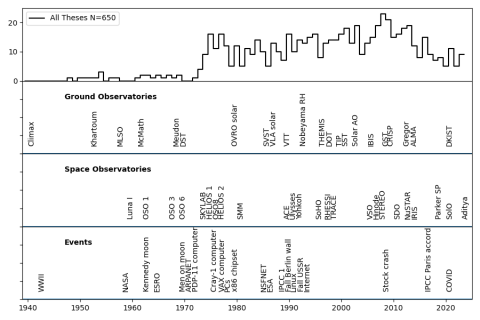
Changing methodologies in solar physics
Philip Judge: For the first time, the methods in solar physics are reviewed using statistical methods. This study attempts to establish a basis for understanding how methods used in research in solar physics have evolved since WWII.
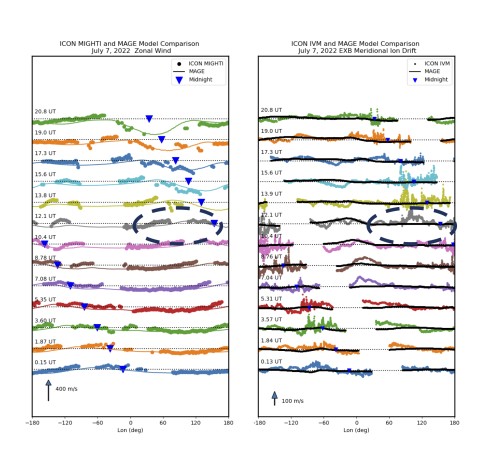
Penetrating electric field with/without disturbed electric fields During the 7-8 July 2022 geomagnetic storm simulated by MAGE and observed by ICON MIGHTI
Qian Wu, Dong Lin, Wenbin Wang, Kevin Pham, Liying Qian, Haonan Wu, Thomas J. Immel, and Erdal Yigit, using a numerical model, simulated the nighttime ionospheric disturbances caused by electric fields that enter this system from the magnetosphere and electric fields generated internally by changes in the thermospheric winds.
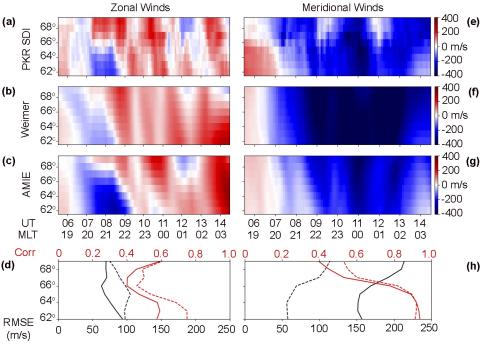
Effects of High-Latitude Input on Neutral Wind Structure and Forcing During the 17 March 2013 Storm
Katherine Davidson, Gang Lu, Mark Conde present a quantitative assessment of the thermospheric forcing and its dependence on high-latitude driving. Due to its coupling with the ionosphere via ion-neutral collisions, the simulated neutral wind and the corresponding thermospheric forcing from Global Circulation Models (GCMs) are highly dependent on the model's high-latitude ionospheric input.
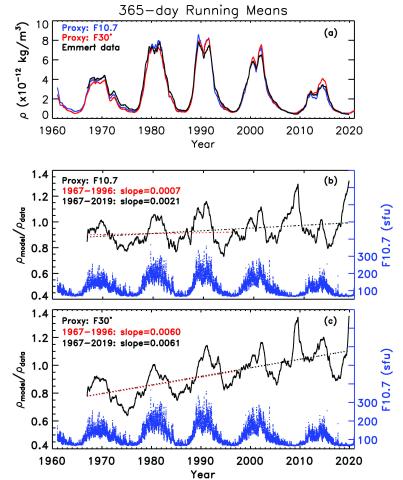
Evaluating F10.7 and F30 radio fluxes as long-term solar proxies of energy deposition in the thermosphere
Liying Qian, and Kalevi Mursula use model simulations and observations to examine how well the F10.7 and F30 solar radio fluxes have represented solar forcing in the thermosphere during the last 60 years of weakening solar activity.
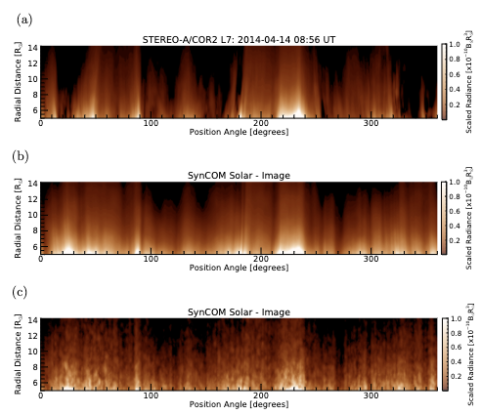
SynCOM: An Empirical Model for High-Resolution Simulations of Transient Solar Wind Flows
Published: November 2024. Sarah Gibson, V. P. Moraes Filho, V. Uritsky, B. J. Thompson, and C. E. DeForest demonstrate how SynCOM can be employed to assess the precision and performance of two different flow tracking methods. By providing a ground-truth based on observational data, we highlight the importance of SynCOM in confirming observational standards for detecting coronal flows.
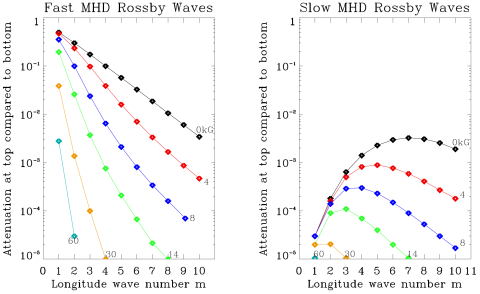
Evolution Of Amplitude And Longitude Phase Of Tachocline Rossby Waves Diffusing To The Photosphere
Published: 05 November 2024. Mausumi Dikpati, Peter A Gilman, Breno Raphaldini, Scott W McIntosh improve on the 2020 MHD Rossby wave model to include a hydrodynamic turbulent convection zone (CZ). This new approach enabled them to examine how MHD Rossby waves generated in the tachocline might diffuse upward through the CZ to the solar surface.
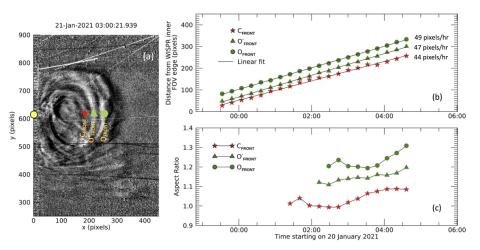
A Study on the Nested Rings CME Structure Observed by the WISPR Imager Onboard Parker Solar Probe
Published: December 2024. Sarah Gibson, et al. present an analysis of a CME and its interior structure observed during the seventh solar encounter of the Parker Solar Probe, utilizing the data from its Wide-Field Imager for Solar PRobe (WISPR) heliospheric imager. They observe a complex CME structure consisting of non-concentric nested rings, which we argue is a signature of the embedded helical magnetic flux rope (MFR) of the CME.
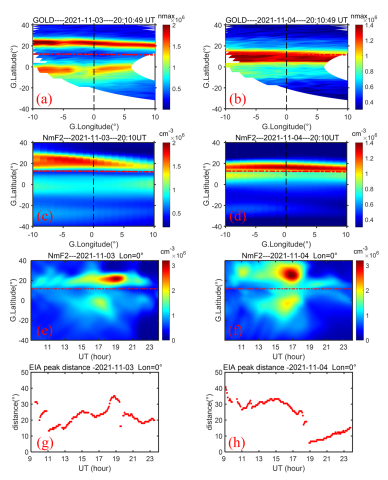
The Formation Mechanism of Merged EIA During a Storm on 4 November 2021
Kun Wu, Liying Qian, Wenbin Wang, Xuguang Cai, and Joseph Mclnerney conduct an in-depth analysis of Whole Atmosphere Community Climate Model-eXtended (WACCM-X) simulations to examine physical mechanisms of the formation and evolution of an equatorial ionization anomaly (EIA) merging phenomenon during a storm on November 4th, 2021.
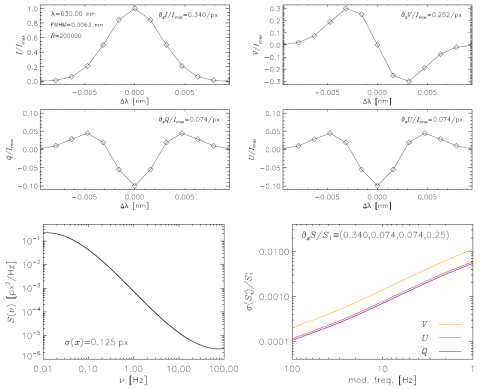
Image instabilities and polarization cross-talk
In this publication, Roberto Casini and Alfred de Wijn expand on their previous study of the impact of atmospheric seeing on polarization cross-talk, and show how the formalism that was developed in that work can be applied to treat the case of spatial modulators of polarization.